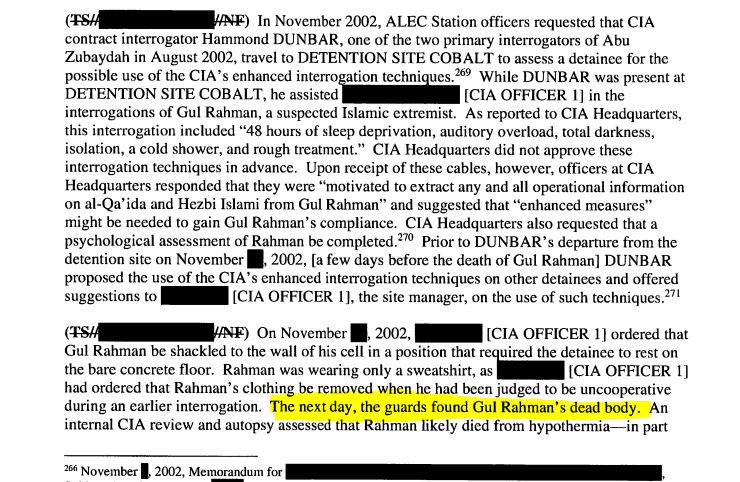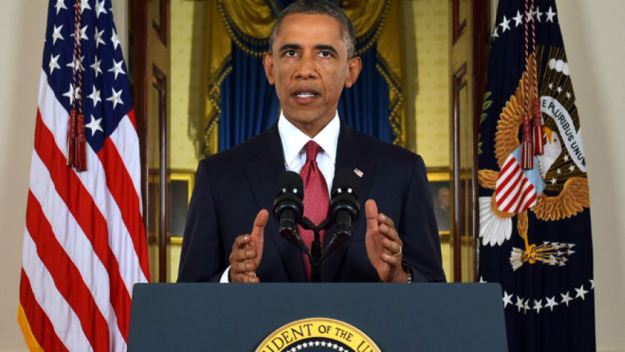
As she celebrates her 20th season with ABT, Gill makes the cover of Irish America, and is named one of their inaugural “Top 50 Power Women”. Brava!
Haunting the Web Since 1999

As she celebrates her 20th season with ABT, Gill makes the cover of Irish America, and is named one of their inaugural “Top 50 Power Women”. Brava!

In the Prospect, David Dayen explains how deficit-witch-hunting and hubris paved the way for Brexit. particularly David Cameron and the Tories’ “general belief in expansionary austerity, that you could cut your way to prosperity. For those that don’t recall, this led to the brink of a triple-dip recession, and terrible growth numbers for years and years…What Leave offers, a toxic stew of isolation and racism, isn’t any good either. But when elites spend this long doing nothing for large swathes of the population, they’re willing to listen to anyone with a different idea.”
Since the UK’s faceplant last week, there’s been some talk (and. for some, wishful thinking) that Brexit is the prelude to Trump, fact-free appeals and all, and lord knows we spent far too much time of late playing the austerity game also. But I’ll stand by my “nope, not gonna happen” prediction here: The UK electorate is 90% white, America’s is one-third non-white — That’s a big difference, and the same sorts of nativist appeals just aren’t going to play here anymore — which I am very thankful for.
Still, Brexit is another sterling example of how, when people are justifiably angry about being screwed over, many of them may not vote in their best interests. And it’s emblematic of one of the more insightful comments I’ve heard recently about 2016 (and unfortunately I can’t figure out where I first saw it): When you have Latin American levels of inequality, you’ll end up with Latin American politics.

Prime Minister for Peace tells the story of Milan Panic, a California businessman who’s lived a Zelig-like life of sorts. As a child, he fought with the partisans against the Nazis in his native Yugoslavia. As a young man, he became an Olympic cyclist, and used that opportunity to escape Tito’s Communism and defect to the West. He then started a pharmaceutical business that made him a millionaire several times over.
This book focuses on his experiences in the 1990s, when he went back to the then-fragmenting Yugoslavia to serve as Prime Minister, and, in trying to bring peace to the Balkans, went toe-to-toe with Serbian dictator Slobodan Milosevic, not to mention cynical Western diplomats and sundry other ethnic nationalists.
Buyer’s Remorse, my sixth collaboration with Bill Press since 2001 — he writes; I research, outline, edit, and fine-tune — covers, in a nutshell, all the many ways Barack Obama’s presidency let progressives down. If you’ve swung by here at any point in the past, you’ve already heard me go on about this at some length, so no need to belabor it here. (This book came pre-researched, in that regard.)
Interesting sidenote: This has been the biggest-selling book I’ve been involved with since the Carville/Ken Starr one in ’99, in part because the Clinton campaign tried to bash Bernie Sanders with it in the early primaries. (Clinton is apparently Obama’s biggest fan, except when she isn’t.)
And The Past and Future City, coming out this October, is what I’ve been working on this past spring, with NTHP president and CEO Stephanie Meeks. It makes the case for historic preservation in the 21st century and argues, in effect, this isn’t your grandparents’ preservation movement anymore.
All over America, historic buildings are helping make cities more desirable, and urban residents happier and healthier. They are spurring economic growth, nurturing start-up businesses, and creating jobs. They are reducing energy costs and environmental impact, and encouraging healthy living practices like walking and cycling. They are helping to provide solutions to challenges like affordability, displacement, and climate change. And they are turning diverse neighborhoods into communities, and helping us come to terms with the difficult chapters in our history. And the best part is, they’re already there — they just need smart, forward-looking policies to unlock their power and potential. On sale soon!

Like countless others, I have been railing about the Bush-era CIA torture regime here for over a decade now. So this isn’t a breaking story. Still, the recent Senate Report — which the “most transparent administration in history” fought tooth and nail to bury — ably covers all we’ve known to date, and includes a number of horrifying new revelations.
For example, so it turns out that we — you and I — paid foreign governments $300 million to construct and maintain our dungeons.






Another detainee froze to death during his Room 101 session.



And on top of everything else, Americans approve of all of this by 2-1.
So, what is there to say? The illegality here is black and white, the crimes abhorrent, the moral corruption pervasive…and yet we all just collectively shrug. The sad and hilarious thing about The Onion‘s recent minotaur video — “That hungry half-man, half-bull kept us safe from the terrorists!” — is this is basically the world we live in now.
Makes me sick, m*therf*cker, how far we done fell.

ISIS, oh ISIS – What drives us to you is what drives us insane: In Reuters, Middle East expert Andrew Bacevich has some serious doubts about a military solution to the newest Big Bad (who, let’s remember, are a threat at all precisely because of all the weapons we’ve already dumped in the area — Gee, it’s almost like our always getting involved makes everything worse.) “Rudderless and without a compass, the American ship of state continues to drift, guns blazing.”
He’s not alone. While they’ve been highly complicit in the collective freak-out over the past few weeks, the media — as welcome returning blogger Dan Froomkin notes — are starting to get skeptical too. “Allam notes that Yemen and Somalia are hardly examples of success; that the new Iraqi government is hardly ‘inclusive’; that training of Iraqi soldiers hasn’t worked in the past; that in Syria it’s unclear which ‘opposition’ Obama intends to support; and that it may be too late to cut off the flow of fighters and funds.”
Keeping in mind that Obama himself seems to think this is all a terrible idea, let’s recall what we’re really dealing with here, via the very worthwhile “War Nerd,” Gary Brecher: “ISIS, compared to any of the groups on that list, is about as scary as your neighbor’s yappy Shih Tzu: all noise and no teeth. Let’s just sober up, for Christ’s sake, and remember we’re talking about a half-assed Sunni militia that couldn’t face up to Assad’s mediocre Syrian Arab Army and still hasn’t found a way to occupy Sunni Iraqi towns that were outright abandoned by the Army, left totally undefended.”
Along the same lines, see Brecher on ISIS’s initial advance back in June:
| “Actually, topography has everything to do with what’s gone well or badly for ISIS. in this latest push. If you know the ethnic makeup of the turf they’ve taken, their ‘shocking gains’ don’t seem so shocking, or impressive. After all, we’re talking about a mobile force — mounted on the beloved Toyota Hilux pickup truck, favorite vehicle of every male in the Middle East — advancing over totally flat, dry ground in pursuit of a totally demoralized opponent. In that situation, any force could take a lot of country very quickly…So this isn’t the second coming of Erwin Rommel by any means. Everything has conspired to push the Sunni advance, from the lousy opponent they’re up against to the terrain, which is a light mechanized commander’s dream.
Flat and dry is how a mechanized force commander wants his ground — and believe me, you haven’t seen flat and dry until you get to Iraq. Once you’re south of the Kurdish mountains, you’re on a dried mudflat…This is, after all, Mesopotamia, a land literally built by the sediment of the Euphrates and Tigris. It’s river mud, but nice and dry because very little rain falls,..On ground like that, any force with good morale and enough fuel could advance as quickly as the Sunni have. It’s the Bonneville Salt Flats of insurgency, the place you go to set new speed records.” |
The point being, we have to stop losing our minds and letting a hysterical media and the same gaggle of Neocon pricks who’ve been wrong about everything for two decades get us involved in every opportunity to make war in the Middle East. Are ISIS a bunch of Bad Men? Undoubtedly. But that doesn’t make them an existential threat to the republic. So how about we all take a deep breath before, yet again, expending ever more blood and treasure in the region?

Thirteen years after a dark day, 15-year-old Bretagne, one of the last surviving 9/11 search dogs, returns to Ground Zero. “In the years that followed 9/11, Bretagne and Corliss deployed together to numerous disaster sites, including Hurricane Katrina, Hurricane Rita and Hurricane Ivan. Bretagne retired from formal search work at age 9 — but today, even though she’s roughly 93 in human years, she still loves to work.”

In a long and handsomely illustrated piece, WaPo’s Stephen Pearlstein looks into the reimagining of Union Station (or is it Truman Station), in light of both commuter needs and the burgeoning of NoMa, H-St, and the DC downtown in general. “This new Union Station would go well beyond the ambitions of Daniel Burnham’s original Beaux-Arts masterpiece. Its footprint would span 10 square blocks — two blocks east to west, five blocks north to south, from the foot of Capitol Hill to K Street.”

And while we’re re-envisioning DC, CityLab looks at some intriguing “High Line”-style plans for the 11th Street Bridge. “Maybe the City Council could be convinced of the merits of the Southeast-to-Southwest Streetcar line once D.C. decides on a final design for the edgiest architecture project in the city’s history.”


Using an algorithm based on the velocity of redshifting galaxies, a team of University of Hawaii astronomers identify our galaxy’s place in the newly-identified Laniakea supercluster. (Laniakea being Hawaiian for “Immeasurable Heaven.”) Adds Slate‘s Phil Plait: “Laniakea is about 500 million light years across, a staggering size, and contains the mass of 100 quadrillion Suns — 100 million billion times the mass of our star.”

Take that, Van Helsing: Per PBS’s NOVA, research increasingly suggests that transfusions of young blood hold the secret to slowing or reversing aging. “We can turn back the clock instead of slowing the clock down,” said Dr. Toren Finkel, director of the Center for Molecular Medicine at the National Heart, Lung and Blood Institute.”
(Unless, of course, it’s all about the jellyfish.)